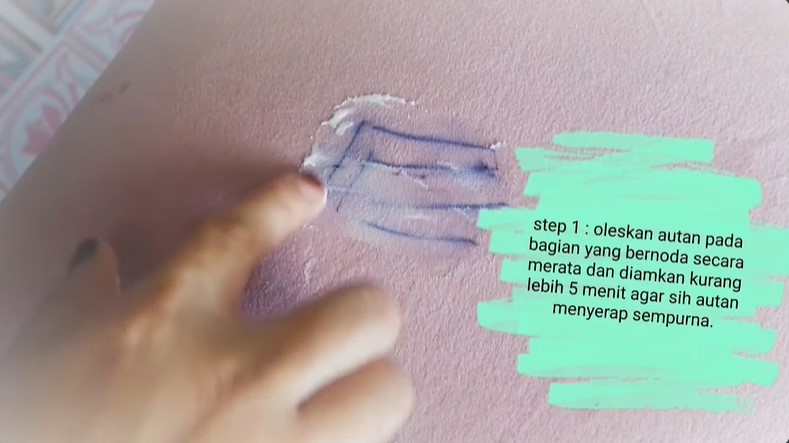foto: YouTube/keiwull
Brilio.net - Ink stains are quite difficult to clean, for example ink stains on chairs or sofas. Ink stains on this chair can appear due to scribbles from children who are learning to write or stationery that accidentally falls onto the chair.
So that ink stains on chairs can be removed, it is not uncommon for people to choose to clean them with alcohol . All you have to do is put a drop of alcohol on a cotton ball, then rub it on the ink stain on the chair. However, if you don't have a stock of alcohol at home, don't worry because there are still tricks.
The trick for removing ink stains from chairs was shared by YouTube account user keiwull. This woman explained that you can use one kitchen ingredient to help remove ink stains. He practiced this trick on a chair with a cloth cushion.
Remove ink stains from chairs.
The first thing you have to do is apply anti-mosquito lotion to the part of the chair that has the ink stain until it is evenly distributed. After that, leave it for a few minutes so that the anti-mosquito lotion is absorbed first.
"Let it sit for approximately 5 minutes so that it is completely absorbed," emphasized the owner of the YouTube account keiwull, quoted by BrilioFood on Thursday (16/5).

photo: YouTube/keiwull
After that, prepare an old toothbrush. First dip the toothbrush into a container containing dish soap mixed with a little water. So, dishwashing soap is the main kitchen ingredient for practicing this trick to remove ink stains from chairs.
After dipping it in dish soap, immediately rub the toothbrush on the area of the chair where there is an ink stain. Rub several times until all the ink stains are gone.
If the chair is free from ink stains, just remove the remaining anti-mosquito lotion and dish soap with a damp cotton swab. Finally, dry the chair by drying it or heating it with a hairdryer.

photo: YouTube/keiwull
How about it, this trick is really practical to remove ink stains from chairs, isn't it? Taking a peek at keiwull's YouTube upload, although there are no comments from other netizens yet, this video has received enthusiasm from more than 102 thousand viewers, you know.
Reasons why dishwashing soap lacks foam and how to fix it.
Dish washing soap that produces little foam may be caused by the following factors.
1. Soap formula.
The composition of the active ingredients in dishwashing soap affects its ability to produce foam. Surfactant materials such as sodium lauryl sulfate (SLS) or sodium laureth sulfate (SLES) are usually used to produce foam. If the soap uses other surfactants or the surfactant concentration is low, the resulting foam will be less.
2. Oil and fat content.
Soaps specifically formulated to efficiently remove oil and grease may use ingredients that focus more on cleansing power than lather formation.
3. Water quality.
Water with a high mineral content (hard water) can reduce the soap's ability to produce lather. Minerals such as calcium and magnesium in hard water can react with surfactants, reducing their effectiveness.
4. Residue and dirt.
If the surface being washed is very dirty or oily, most of the surfactant will react with the dirt, so that little remains to form foam.
5. Soap pH.
pH also affects foam formation. Soap with a pH that is too high or too low may be less effective at producing lather.
6. Use of additional materials.
Some dish soaps may add ingredients that reduce suds, such as emulsifiers or water softeners, for specific functional reasons.
If the dish soap you use doesn't produce enough foam and you feel it reduces its cleaning effectiveness, you can try the following things.
1. Use warm or hot water, because it can help increase foam and cleaning effectiveness.
2. Add a little more soap than usual.
3. Choose dishwashing soap with a higher surfactant content or one specifically designed for hard water.
(brl/tin)